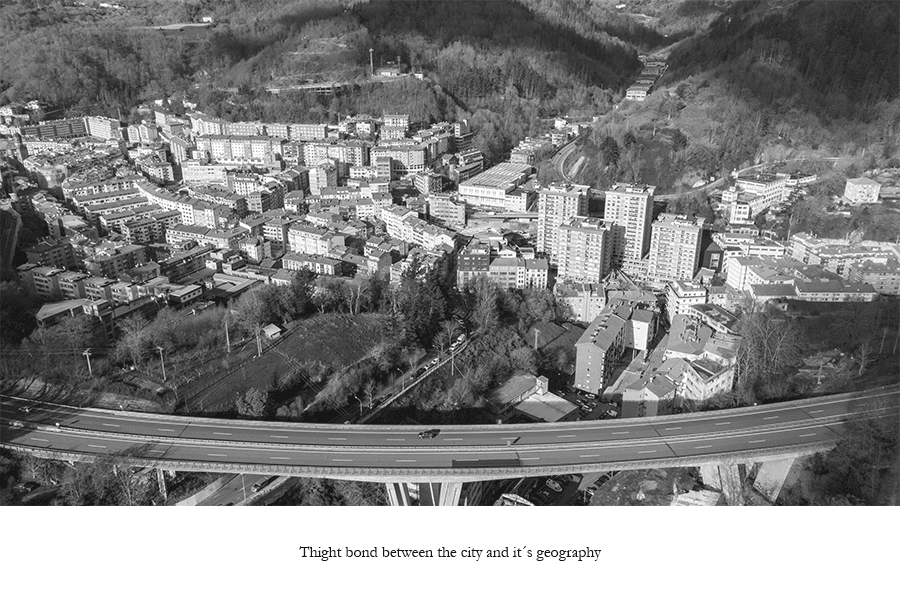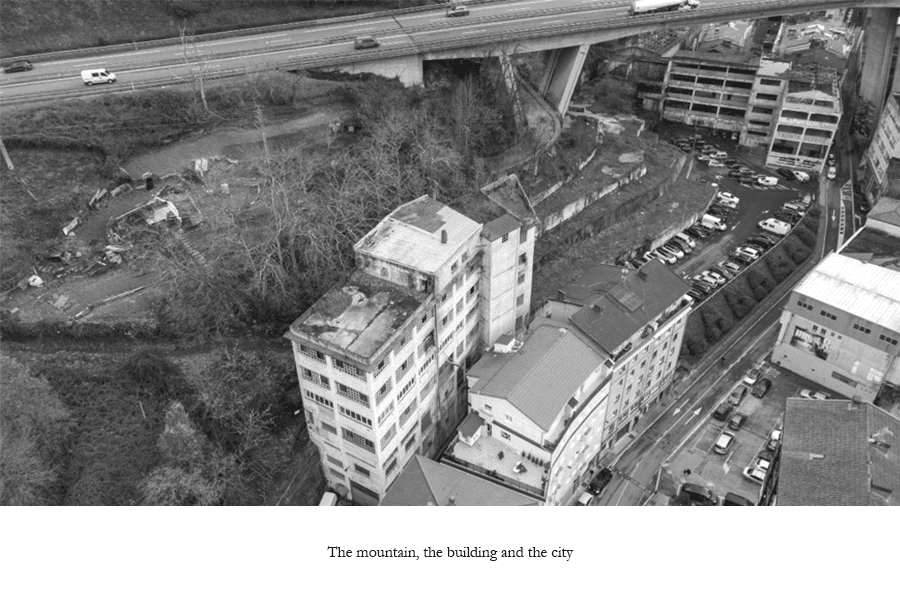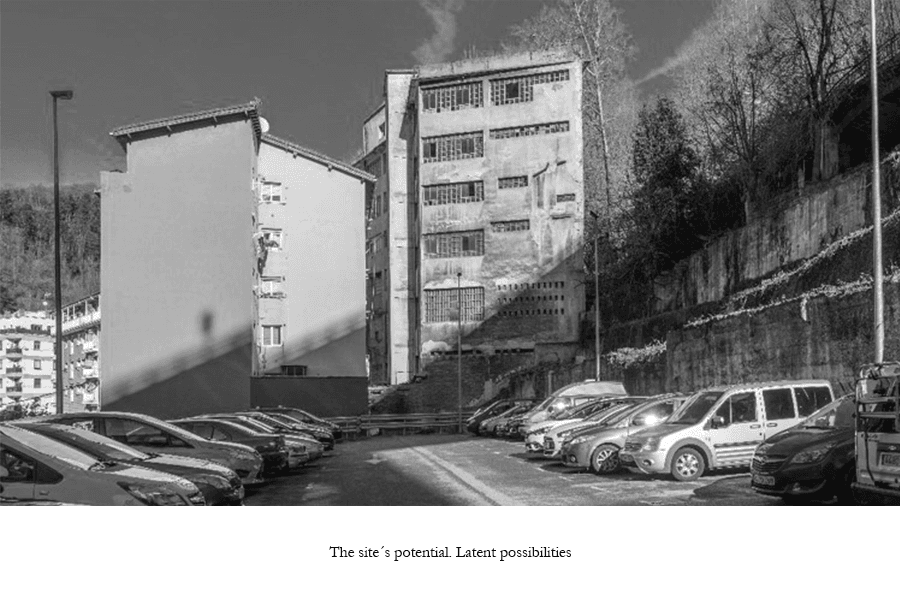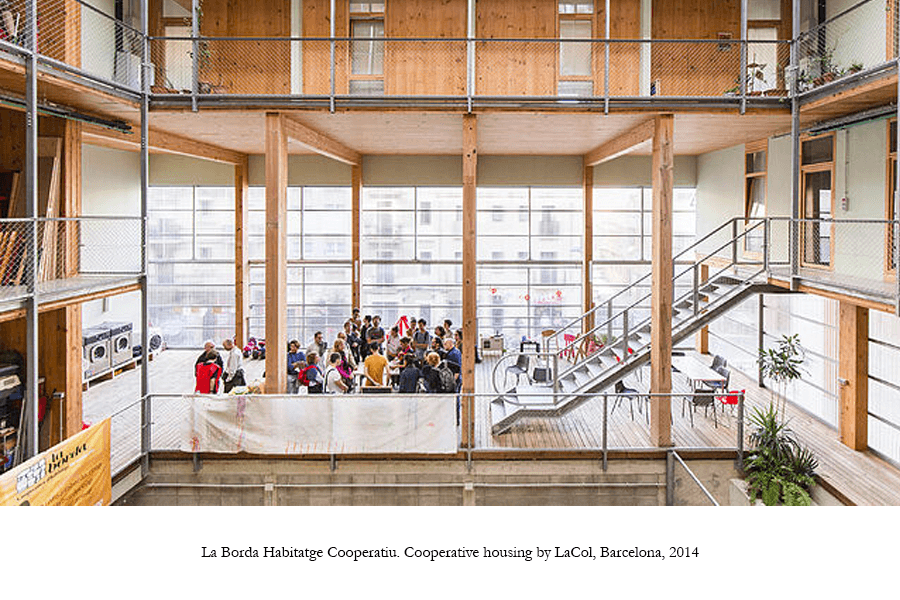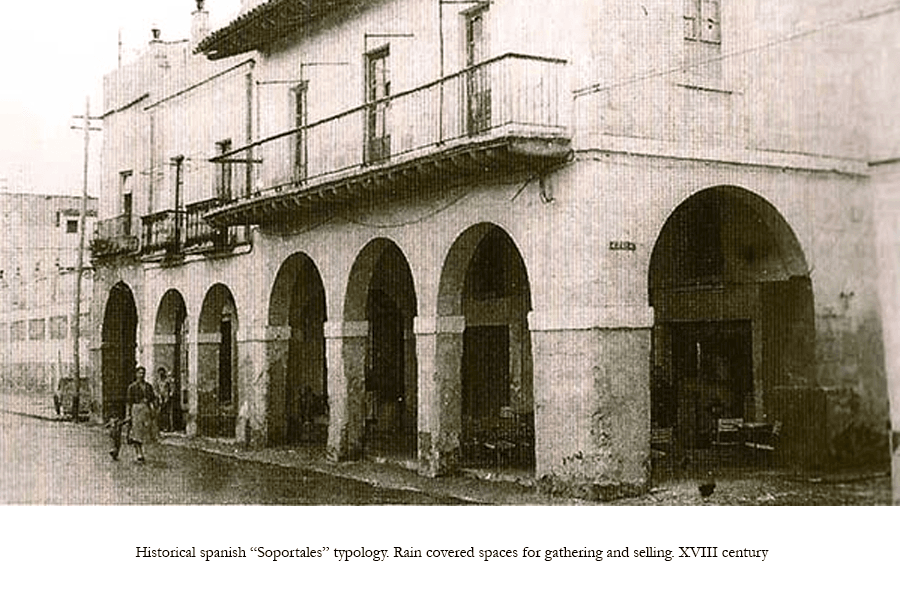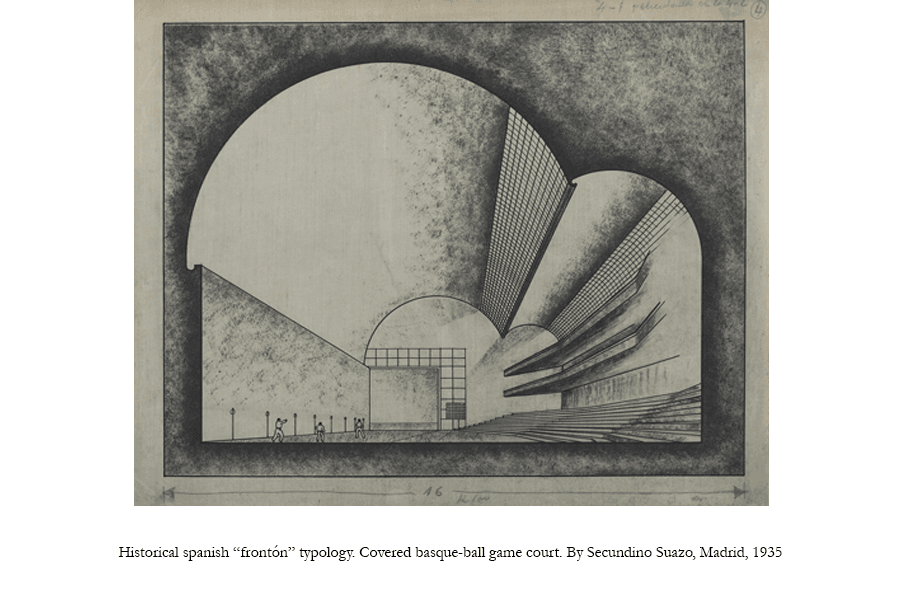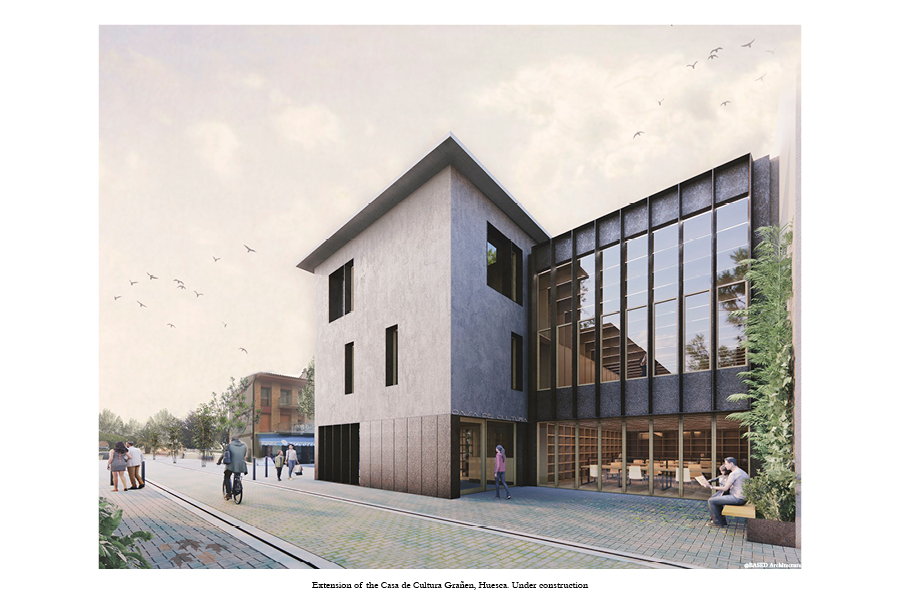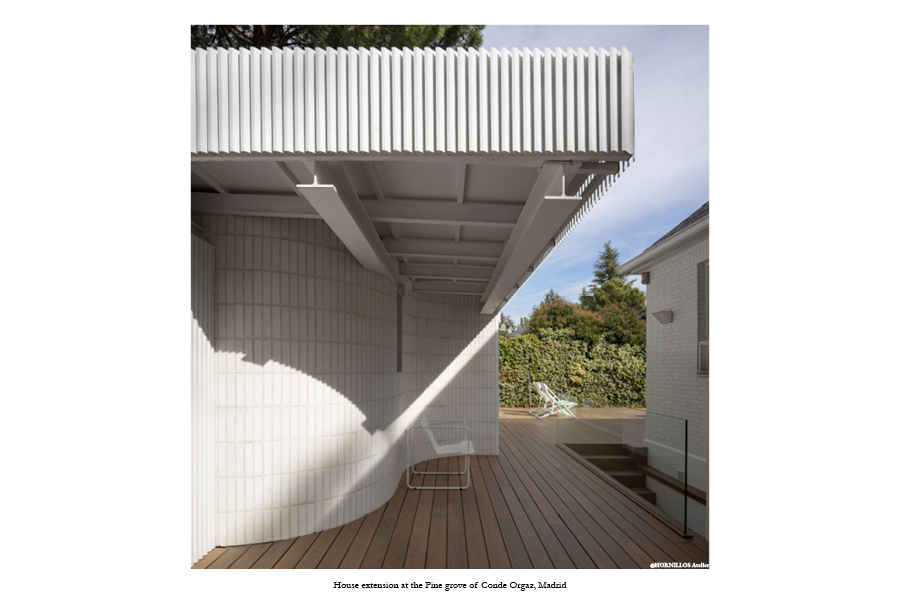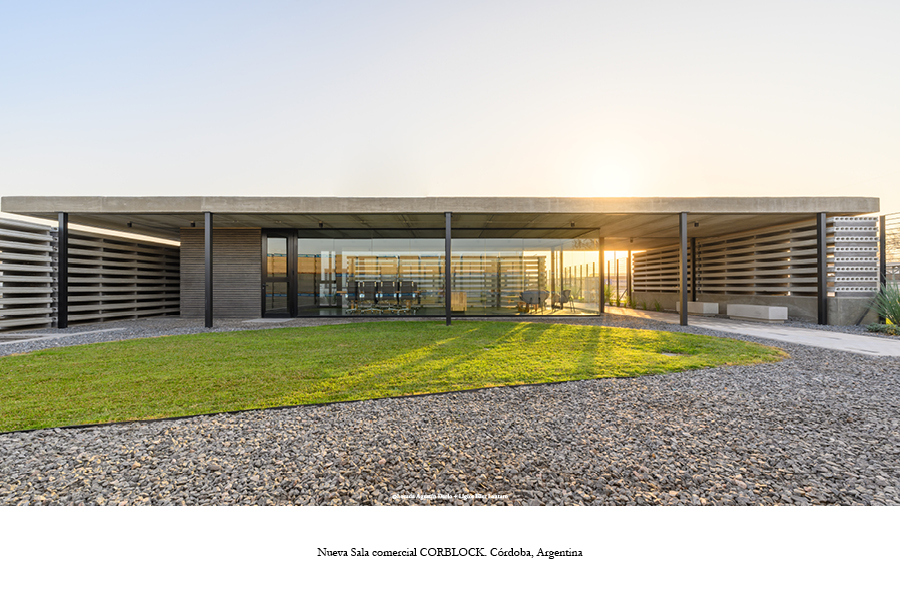Ulysses began his Odyssey
Eibar (ES) - Winner

TEAM DATA
Associates: Miguel Ángel Díaz González (ES), Ignacio Hornillos Cardenas (ES) – architects
Contributors: Agustín Darío Lozada (AR), Eduardo Carlos Dipré Mazza (AR), Morgan Przeracki (FR) – architects, Belen Meloni (AR), María Belén Ramos (AR), Melania Sauer (AR) – students in architecture
miguelangel@based-architecture.com
See the complete listing of portraits here
See the site here
TEAM PORTRAIT
VIDEO (by the team)
INTERVIEW
Click on the images to enlarge
1. How do you define the main issue of your project in relation with the theme “Living Cities Imagining architecture taking care of the milieus”? And in which way do you think your project can contribute to an ecological and/or social evolution?
Our project goals are, on the one hand, the reuse and enhancement of the existing building and, on the other hand, the revitalisation of the area on an urban scale. The operations are limited to intervening the building in the most sustainable way: instead of demolishing or extending it, working with the existing. This approach helps to generate less waste by avoiding major demolitions and the construction of new buildings to achieve the objective.
2. How did the issues of your design and the questions raised by the site mutation meet?
These two aspects were never opposites for us, but complementary. The site and the pre-existences guided us to the solution and the design proposal. A sustainable and respectful approach to the pre-existence is the project basis. On the other hand, the physical enclave of the project is also very suggestive and there were many latent issues that were waiting for a simple but adequate solution.
PROJECT:
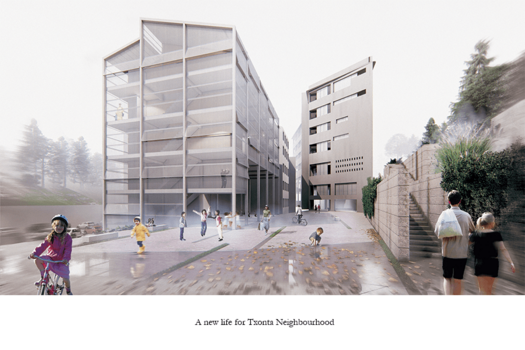
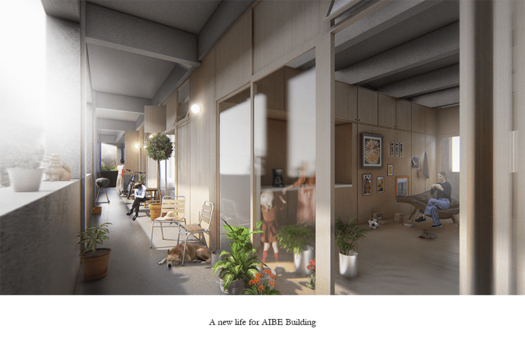
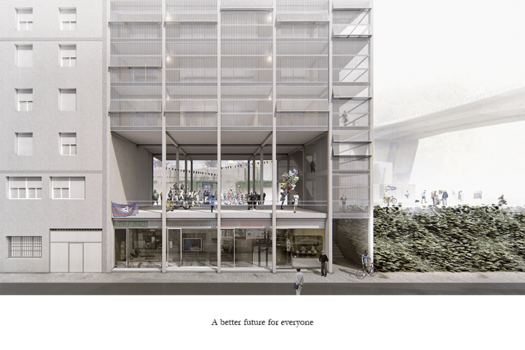
We always try to have this vision in our work. As a general criterion, we don't like to approach any work without taking into account what was already there as well as what was once there too. We always try to be respectful, not only of pre-existing buildings but also of their surroundings and the place culture. Regarding the architectural references, we have lots of them but we also try to have our own approach on every assignment, given by historical plans, paintings, drawings, etc.
SITE:



The project has the capacity to be implemented in stages, which facilitates its construction process. We were aware from the outset that this quality had to be key to the proposal, because there are many actors involved, as well as many themes and scales that are covered. We also provided the buildings with community uses, so that the neighbours understand that they can make use of them and that they were always taken into account.
REFERENCES:



The team was made up of colleagues from Spain and Argentina who have shared training processes in Spanish architecture schools. The qualities of each one were valuable contributions due to the mixture of cultures and visions. Although there are no specialists in particular themes, we all share a global vision of architecture that this project represents very well.
6. How could this prize help you in your professional career?
We hope that this project can be a hinge in our careers. We are very motivated and excited about the outcome. We have a lot of faith and enthusiasm for what the project can achieve in the neighbourhood and in the city,. We also hope that it can become an exemplary project for interventions of this kind around the world.
TEAM IDENTITY
Legal status:
Team name:
Average age of the associates: 35 years old
Has your team, together or separately, already conceived or implemented some projects and/or won any competition? if so, which ones?
Miguel Ángel Díaz González + Eduardo Carlos Dipré Mazza:
- Casa de Cultura, Grañen. 1st prize at second round. 2021, Grañén-Huesca. In collaboration with Pablo Arias Salazar and Lucía Victoria Martínez
- Espacio expositivo Gogora. 2nd prize. 2021, Bilbao-Bizkaia. In collaboration with Andrés Perea Ortega and Daniel Gómez Magide
Agustín Darío Lozada:
- Ephemeral pavilion for La Noche en Blanco event. 1st prize. 2017, Málaga. In collaboration with Cristina Blázquez, Abel Asecas, Isabela Barces y Francisco Ortega Ruiz
- Polo Educativo María Elena Walsh. 3rd prize. 2016, Buenos Aires. In collaboration with Agustín Berzero, Andrés Marcellino, Valeria Jaros, Lautaro Ligios Bäer, Ramiro Gutiérrez Corvalán, Pablo Ochoa
Ignacio Hornillos Cárdenas:
- Prismarium Pavilion. 1st Price. 2020, Logroño. In collaboration with Javier. F. Contreras.
- Bengolarra Building. 5th Price, 2020. Álava. In collaboration with Javier. F. Contreras
WORKS:






